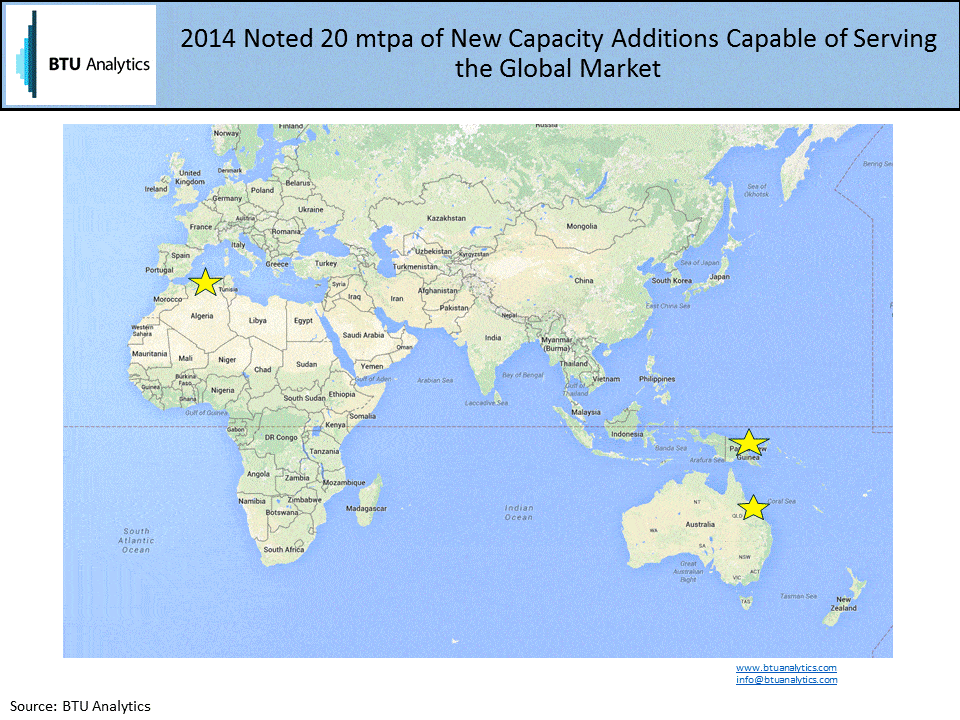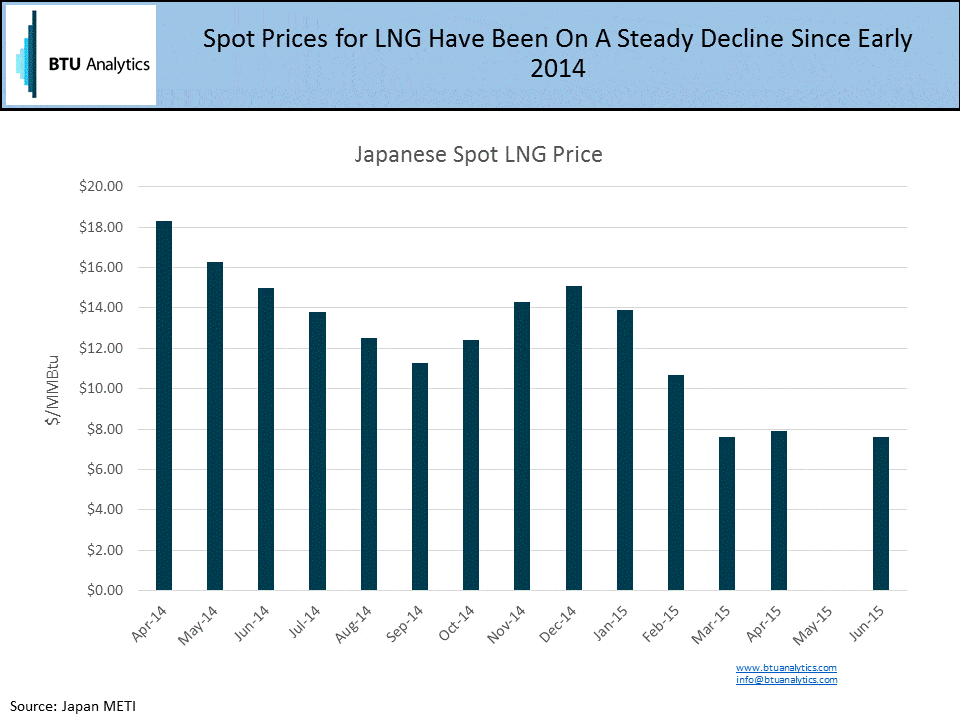Sometime this winter, Cheniere’s Sabine Pass Train 1 will come online and add 4.5 million tons per annum or 0.59 Bcf/d to the global LNG market. About six months after that, Train 2 will double the capacity at the facility and bring US export capacity to 9 mtpa, equating to new natural gas demand of roughly 1.2 Bcf/d. While this may sound great for US producers, US LNG will be have to elbow its way into an increasingly competitive market.
The US is not currently the only player adding LNG capacity. 2014 noted the commissioning of the Arzew – GL3Z (Algeria, 0.6 Bcf/d), PNG LNG (Papua New Guinea, 0.9 Bcf/d) and the Queensland Curtis LNG (Australia, 1.1 Bcf/d) project. Combined, these three projects added 2.6 Bcf/d of liquefaction capacity and in 2015 and 2016, Australia could add another 6.4 Bcf/d of capacity targeting mostly Asian buyers.

From a demand perspective, the global LNG market totaled 11.6 Tcf (31.7 Bcf/d) in 2014, up from 11.3 Tcf ( 30.9 Bcf/d) in 2013. Load at this level meant that existing facilities, whose capacity totaled slightly above 14.4 Tcf (39.4 Bcf/d), ran at a utilization of 83% in 2014.
The decline in oil prices has caused oil-linked LNG contracts to look increasingly more competitive with Henry Hub linked contracts, which is the preferred mechanism for Asian markets. Many Asian buyers use a 15% slope to crude index utilizing a previous three month average. This means that in June, buyers would have paid roughly $9.00/MMBtu.

Low global demand has also trickled into spot pricing. A recent release from Japan’s Ministry of Economy, Trade and Industry (METI) notes that spot prices in the country averaged $7.60 MMBtu in June and came in after a month of no data due to weak global demand and low activity. And as the chart below shows, spot prices in the country have been on a downward march since early 2014.

From a US perspective, liquefaction and transportation costs will average around $7 per MMBtu for Asian buyers, that, combined with current Henry Hub pricing, results in delivered LNG costs of around $9 or $10/MMbtu, meaning that current Asian spot prices undercut contracted pricing in the Gulf. Combine this with continued global capacity build-out, under-utilized facilities and staggering global demand, the short term picture for US LNG stops looking so rosy. And while the International Energy Agency expects global LNG demand to increase by one-third by 2019, the US could have some stiff competition until that demand materializes.
While 1 Bcf/d of Train 1 and Train 2 capacity at Sabine are contracted with BG and Gas Natural Fenosa, the possibilities exists that utilization at the facility will fall below expectations. In the current gas market, and in 2016 in particular, 1.2 Bcf/d of demand is a big deal. With an over supplied market still looming large on the horizon, let’s hope Sabine can keep the ships coming.









